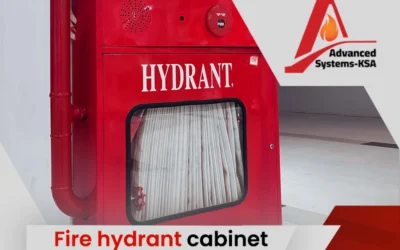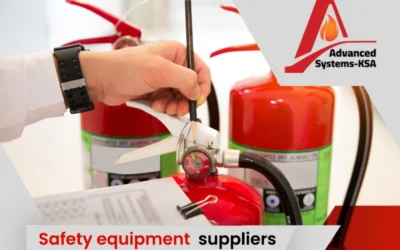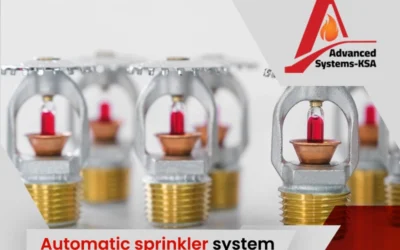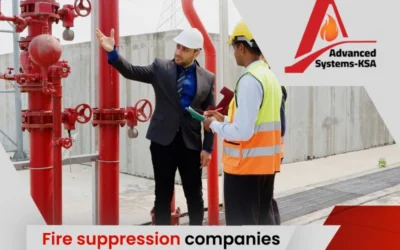A firefighting system combines equipment, devices, and procedures to detect, control, and extinguish fires. It includes various components that work together to minimize the impact of fires and protect life, property, and the environment. This guide explores the significance of these systems and their diverse applications.
Types of Firefighting Systems
There are several types of firefighting systems designed to detect, control, and extinguish fires. Here are some common types:
Water-Based Systems
- Sprinkler Systems: Automatic sprinkler systems are widely used and consist of a network of pipes with sprinkler heads that release water when heat is detected. They are effective in suppressing fires and controlling their spread.
- Water Mist Systems: These systems disperse fine water droplets to cool the fire and reduce oxygen levels. Water mist systems are suitable for a wide range of applications and can be used in areas where water damage needs to be minimized.
Gaseous Suppression Systems
- Carbon Dioxide (CO2) Systems: The CO2 firefighting system displaces oxygen, reducing its concentration and suffocating the fire. They are commonly used in areas with sensitive equipment and materials, such as electrical rooms or server rooms.
- Clean Agent Systems (e.g., FM-200, Novec 1230): These firefighting systems use clean agents that do not leave residue or damage sensitive equipment. They are suitable for protecting valuable assets in areas such as control rooms, data centers, or museums.
Foam-Based Systems
- Foam Sprinkler Systems: These firefighting systems discharge foam, which creates a blanket that separates the fuel from oxygen, suppressing the fire. They are commonly used in areas with flammable liquids, such as warehouses or chemical storage facilities.
- Foam Pourer Systems: Foam pourer systems deliver foam directly onto the fuel surface, providing rapid fire suppression. They are often used in areas with flammable liquid storage tanks or helipads.
Dry Chemical Systems
These systems use dry chemical powders, such as ABC or BC powder, to extinguish fires by interrupting the chemical reaction. They are versatile and suitable for various fire hazards, including flammable liquids, gases, and electrical fires.
Smoke Management Systems
- Smoke Exhaust Systems: These systems remove smoke from a building, improving visibility for occupants and aiding evacuation.
- Pressurization Systems: Pressurization systems create a pressure differential to prevent the movement of smoke into protected areas, such as stairwells or escape routes.
- Smoke Curtains: Smoke curtains are deployed to contain or channel smoke, preventing its spread to other areas of the building.
Elements of A Firefighting System
The following is a breakdown of the elements that must be present in every firefighting system:
Fire Detection
Fire detection involves the use of smoke detectors, heat detectors, flame detectors, or a combination of these devices to identify the presence of a fire. Once a fire is detected, it triggers an alarm to alert occupants and initiates the response sequence.
Fire Suppression Systems
These systems are designed to extinguish fires or control their spread. They can be categorized into two main types:
- Active Fire Suppression: These systems use agents such as water, foam, gas (e.g., CO2), or chemicals to extinguish the fire. Examples include the systems mentioned above as water mist systems, gas suppression systems, and foam systems.
- Passive Fire Suppression: These systems are designed to contain or slow down the spread of fire. Examples include fire-resistant doors, fire-resistant walls, fire-rated windows, and fire dampers in ventilation systems.
Firefighting Equipment
Firefighting tools and equipment include portable fire extinguishers, fire hoses, fire hydrants, fire blankets, and other tools that enable occupants or trained personnel to extinguish or control small fires before they escalate.
Fire Alarm and Communication Systems
These systems provide early warning and communication during a fire incident. They include fire alarm panels, public address systems, emergency lighting, and evacuation signage to facilitate safe evacuation.
Emergency Response Plan
A comprehensive firefighting system should have an emergency response plan in place. This plan outlines procedures for reporting fires, evacuating occupants, notifying emergency services, and coordinating the firefighting efforts.
Training and Education
Proper training and education are crucial for ensuring that occupants and personnel understand fire safety procedures, evacuation routes, and how to use firefighting equipment effectively. Regular drills and exercises help familiarize individuals with emergency protocols.
Firefighting System Applications
Firefighting systems find applications in various settings where fire protection is essential such as:
- Residential buildings: Apartment complexes, condominiums, and single-family homes.
- Commercial Buildings: Office buildings, retail stores, hotels, and shopping centers require these systems to ensure the safety of occupants and protect valuable assets.
- Industrial Facilities: Manufacturing plants, warehouses, and industrial complexes have unique fire hazards due to the presence of flammable materials, machinery, and processes.
- Healthcare Facilities: Hospitals, clinics, and medical centers have a high concentration of people, including patients who may have limited mobility. The Fire systems in healthcare facilities are designed to facilitate safe evacuation and protect sensitive medical equipment.
- Educational Institutions: Schools, colleges, and universities require firefighting systems to protect students, staff, and educational resources.
- Transportation Infrastructure: Fire protection is critical in transportation hubs such as airports, train stations, and bus depots.
- Data Centers and Server Rooms: Data centers house valuable electronic equipment and have unique fire risks.
Fire Fighting System Suppliers in Saudi Arabia
The Saudi Arabian market boasts a diverse range of firefighting system suppliers, each offering unique solutions to cater to various needs. Among them, Advanced Systems stands out for its commitment to delivering high-quality fire protection equipment and services. Leveraging our extensive experience in the field, we aim to become a leading provider in the region.
Our team of skilled professionals uses our expertise to provide clients with optimal fire protection solutions for their assets, projects, and facilities. By offering cost-effective options and top-notch project design, Advanced Systems prioritizes the safety of lives, property, and valuables.
Additionally, our dedication to continuous learning and innovation ensures clients receive the most up-to-date technology and support available. Get in touch with us now for a consultation about the most appropriate fire system for your property.
Read More:
